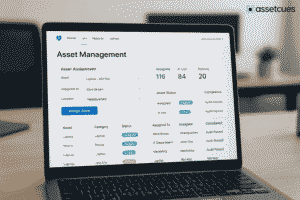What Is an Asset Assignment Form?
An asset assignment form is a document that records the handover of a company asset from one person or department to another. As a result, it ensures assets are properly managed and accounted for within the organization. Widely used for asset assignment to employees, this form provides a clear audit trail of who is responsible for each item.
TL;DR
Asset assignment forms are official documents for assigning company assets to employees. They detail what was issued, to whom, and when, including employee info, asset details, and sign-offs.
Using these forms improves accountability, prevents asset loss, and streamlines IT/Finance workflows for managing equipment.
What Does It Include?
Typically, a standard asset assignment form contains the following details:
- Employee Information: Name, ID, job title, department, and supervisor.
- Asset Details: Description of the item, serial number, issuance date, condition, and assignment date.
- Assignment Confirmation: Employee’s signature confirming receipt of the asset.
- Verification: Signature of an authorized person (HR, IT, or manager) verifying the assignment.
Why Use an Asset Assignment Form?
Using an asset assignment form brings several benefits:
-
Accountability & Tracking:
As a result, every asset assignment includes documented sign-offs, reducing the chances of items going missing. In fact, nearly 30% of companies report losing track of assets due to poor visibility. Therefore, using a standard form helps close that gap by clearly logging who has what.

Ready to Implement the Right Tracking Technology?
Discover how our cutting-edge asset tracking streamlines operations, boosts visibility, and reduces losses.
See it in action with a personalized walkthrough.
Ready to Implement the Right Tracking Technology?
Discover how our cutting-edge asset tracking streamlines operations, boosts visibility, and reduces losses.
See it in action with a personalized walkthrough.

-
Streamlined Process:
A well-designed form eliminates paperwork and manual errors. It streamlines asset handovers during onboarding or equipment swaps.
-
Audit & Compliance:
As a result, it provides a clear audit trail for Finance and IT teams. The records from these forms directly feed into inventory databases and asset registers. Consequently, this supports audits, simplifies depreciation tracking, and aids compliance.
Sample Template Overview
An asset assignment form template is typically one page (paper or digital), capturing all the above details. Many companies use a pre-formatted Word or PDF template that auto-fills asset details from an asset management system. The completed form is then saved or printed as a signed PDF for record-keeping.

How It Supports Employee Asset Management
Asset assignment forms ensure every device or tool issued to an employee is logged and trackable. As a result, IT knows who has which device, and Finance maintains an accurate asset register. Moreover, this process makes retrieving assets during offboarding or equipment upgrades easier.
Modern solutions (like AssetCues) integrate assignment forms with RFID asset tracking for real-time updates. AssetCues, for instance, has tracked over 1 million assets via RFID. Combining digital forms with advanced tracking yields complete visibility and control of assets across their lifecycle.





